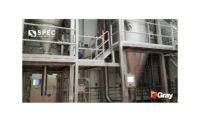A new report by Food & Consumer Products of Canada (FCPC), Canada, is drawing attention to the growing competitiveness challenges of Canada’s food and beverage manufacturing industry. Findings reveal the food, beverage and consumer products industry has been underperforming due to a number of key challenges.
Between 2013-2017, food, beverage and consumer products members’ gross sales grew at an average annual rate of 1.45%, compared to 2.12% in Canada’s real GDP.
Barriers to innovation
The report indicates that Canada continues to be a challenging environment for innovation and growth in the food, beverage and consumer products industry. Key takeaways include:
- High growth in costs has outpaced growth in sales, which is dampening the likelihood of investment. The cost of placing a product on store shelves in Canada rose 22% from 2013 to 2017, while remaining flat in the United States.
- Food, beverage and consumer products companies expect this trend to continue due to the high level of consolidation among retailers, which is having a negative impact on the cost of placing and maintaining products on store shelves.
- Most product innovation does not take place in Canada. In fact, 83% of branded products sold on Canadian shelves were neither developed nor manufactured domestically.
- Manufacturing capabilities have remained constant in Canada, with little to no change in the total number of plants.
- Compared to other manufacturing sectors in Canada, food manufacturers rank amongst the lowest in terms of a competitive operating environment.
“These ongoing challenges are having a negative impact on the future sustainability of our sector,” says Michael Graydon, chief executive officer. “Coupled with the unpredictability with our most important trading partner, retaliatory tariffs on our industry and labor shortages, I’m concerned that manufacturers may look to more attractive markets to invest– putting Canadian jobs, rural communities and the economy at risk.”
Additional challenges include unprecedented levels of government intervention in how the industry makes, markets, packages and labels products in Canada.
“No other manufacturing sector in Canada is being asked to make all of these changes all at once. The cumulative and costly regulatory burden appears to be limiting innovation, deterring companies from expanding or entering the market,” says Graydon.
Capitalizing on opportunity
Despite these challenges, food, beverage and consumer products processors are optimistic about the opportunities that exist for the sector, and continue to work with federal and provincial governments to overcome roadblocks to innovation and investment.
“We are pleased that the federal government has recognized the strategic importance and potential of our sector, and is committed to working toward making our industry more competitive,” says Graydon. “Steps are being taken in the right direction such as incentives to accelerate business investment, commitment to regulatory reform, targeted investments for our industry and support for skills development. We strongly support the government’s Economic Strategy Tables that support competitiveness and urge the implementation of all of the reports’ recommendations.”
The FCPC Industry Sustainability & Competitiveness Study is based on a 5-year trend from food, beverage and consumer products members that account for approximately 40% of total grocery sales in Canada.
Canada’s food, beverage and consumer products industry by the numbers:
- The food, beverage and consumer products industry employs more than 300,000 Canadians.
- 16.7% of all manufacturing jobs in Canada are in the food, beverage and consumer products industry.
- The food, beverage and consumer products industry contributes approximately $29 billion to Canada’s GDP annually.
- Food, beverage and consumer products companies in Canada purchase 40% of the food grown from Canadian farmers. Over 60% of the industry’s output is sold to Canadians through grocery stores and restaurants.
- In 2018, the value of food and beverage exports was $35.8 billion, with products shipped to over 190 countries.




